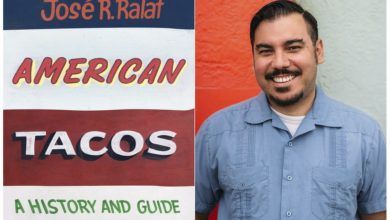Sugarcane farming transforming indigenous lands in Bolivian Amazon

By Karen Gil and Rafael Acuña
Buena Vista, Bolivia, Mar 29 (EFE).- Sugarcane fields stretch over 124 hectares (306 acres) of land once covered by lush rainforest and home to wild animals on the outskirts of Buena Vista, one of the 20 communities that make up the Tacana Indigenous Territory in the western part of the Bolivian Amazon.
Without the cool shade that trees had previously provided, walking in that expanse equivalent in size to 173 soccer fields means tolerating temperatures of up to 35 C (95 F) in the spring.
Local inhabitants say the temperature has changed since 2016, when trees began to be cleared to plant sugarcane and supply raw material for the Empresa Azucarera San Buenaventura (EASBA), a state-owned mill that is based in the town of San Buenaventura, La Paz Department, and borders a section of the Tacana 1 Communal Land of Origin.
“Before the EASBA arrived, no one cleared (land) with machines,” Buena Vista’s mayor and one of the local sugarcane farmers, Julio Duval, said.
A total of 4,573 hectares of forest were cleared in that area of La Paz Department between 2010, when construction began on EASBA’s refinery complex, and 2019, according a study by agronomist and researcher Daniel Robinson.
That deforestation also has implied the loss of seeds of native fruit that indigenous people have traditionally collected for medicinal uses and food.
NEGATIVE EFFECTS
Sugarcane generates income for local communities, but it also has negative effects that derive from forest loss,” the president of the Indigenous Council of Tacana Women, Mariane Quenevo, said.
“The animals are migrating. We’re affected because we eat (wild) meat from the forest, and for us more forestation is a problem,” she added.
According to a study by Zulema Lehm, an author and sociologist with more than 25 years of experience working with indigenous communities in the Bolivian Amazon, the main source of annual income for these communities had been the sale of their labor and activities based on natural resources that did not involve a change in soil use.
Those activities included timber gathering as well as fishing, hunting, tourism and the harvesting of native honeys.
The arrival of EASBA in that Amazon rainforest region altered that reality. The company began operating in 2017 when leftist President Evo Morales was still in office and was touted as a project that would foster the development of local communities and the country as a whole.
Buena Vista, a community of more than 100 families, was the first in that region to accept the creation of a sugarcane plantation, a project that began in 2017 and enlisted 20 local partner farmers.
A total of 994 tons of sugarcane were gathered in this year’s harvest, with the 20 partners receiving 8,500 bolivianos (around $1,235) apiece, an amount that only covers a portion of their annual expenses.
Land clearance costs the sugarcane farmers roughly $4,000 per hectare; as a result, the total debt owed by members of the Buena Vista community amounts to almost a half-million dollars.
And “since the company has done all the clearance work for the planting, it takes 80 percent” of the harvest, Duval said.
He said the first harvest yielded sugarcane whose stalks were at least 10 centimeters (four inches) thick, but that they became thinner in the second and third harvests.
The sugarcane farmers have questioned their contractual arrangements at different times due to the low level of profit.
And some Tacana farmers – including those in the community of Carmen Tahua, which is located 83 kilometers (50 miles) from the EASBA plant and had set aside 171 hectares for sugarcane cultivation – received no payment at all after their harvest was rejected by the company due to the sugarcane’s insufficient stalk diameter.





